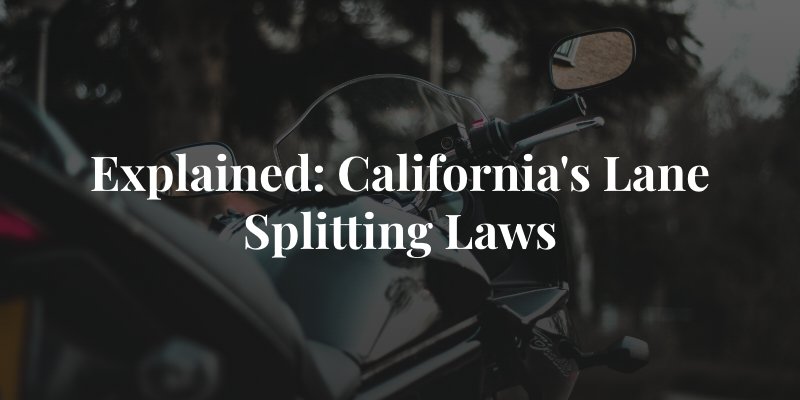Lane splitting is a technique sometimes practiced by motorcyclists in an effort to stay out of the way of motor vehicle traffic, where the motorcyclist travels on the line between two lanes of traffic. California was the first state to allow lane splitting – as long as it is done safely and prudently.

What Is Lane Splitting?
Lane splitting, sometimes referred to as lane sharing or white lining, is a maneuver where a motorcyclist rides on the line between two lanes of same-direction traffic rather than keeping to one lane only. Typically, lane splitting is performed when surrounding traffic is traveling at a slow speed or is stopped.
Is Lane Splitting Safe?
Lane splitting is surrounded by controversy. Opinions on whether or not lane splitting is safe for motorcyclists and surrounding drivers are divided. In 2015, a safety study by UC Berkeley – which ultimately led to California permitting lane splitting – concluded that lane-splitting is “relatively safe if done in traffic moving at 50 mph or less, and if motorcyclists do not exceed the speed of other vehicles by more than 15 mph.”
Proponents of lane splitting argue that it can improve motorcyclist safety by keeping them off of congested roads, shortening the amount of time they are on freeways and preventing them from having to stop between two cars, where they are at risk of being rear-ended. Opponents raise concerns regarding safety risks, including the potential for sideswipe accidents, startled motorists overcorrecting, and conflicts between drivers and motorcyclists.
California’s Lane-Splitting Law
On January 1, 2017, California became the first state to amend its vehicle code to effectively legalize lane splitting by motorcyclists. After Assembly Bill 51 was passed into law, section 21658.1 was added to the California Vehicle Code to define lane splitting and give educational guidelines on this topic for motorists.
This section directly follows California’s law regarding roadways divided into two or more lanes for traffic traveling in one direction (section 21658), which states that on these roads, a vehicle must be driven entirely within a single lane and cannot be moved from the lane until the movement can be made with reasonable safety.
How to Safely Lane Split on a Motorcycle
Motorcyclists who wish to lane split in the state of California can do so as long as they are safe and maintain reasonable speeds. The following safety information can help prevent accidents while lane splitting:
- Accident and injury risks increase at higher speed differentials between the motorcyclist and surrounding vehicles. Crash risk also increases with the motorcyclist’s speed.
- Accidents are more likely in inclement conditions, such as bad weather and low lighting. A motorcyclist should take his or her surroundings and the state of the road into consideration.
- In general, it is safer for motorcyclists to ride on the line between the far left lanes than between other lanes of traffic on a multi-lane freeway.
It is possible for a motorcyclist to receive a citation for a traffic infraction if he or she is caught lane splitting in a manner that appears dangerous or reckless by a law enforcement officer. In addition, riding on the shoulder of a road is illegal and not considered lane splitting.
If you get into an accident involving lane splitting in California, either as a motorcyclist or a motor vehicle driver, contact the attorneys at Bridgford, Gleason & Artinian for a free discussion about your legal options with a car accident lawyer serving Orange County.
